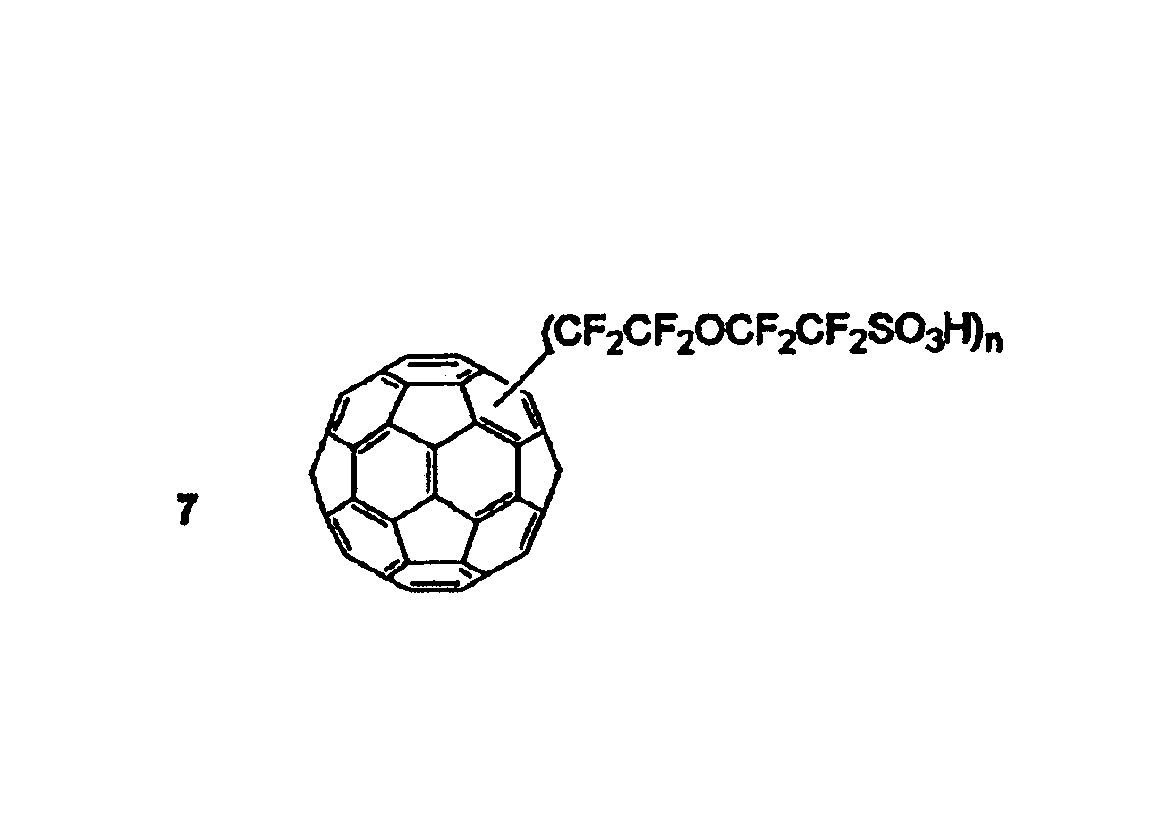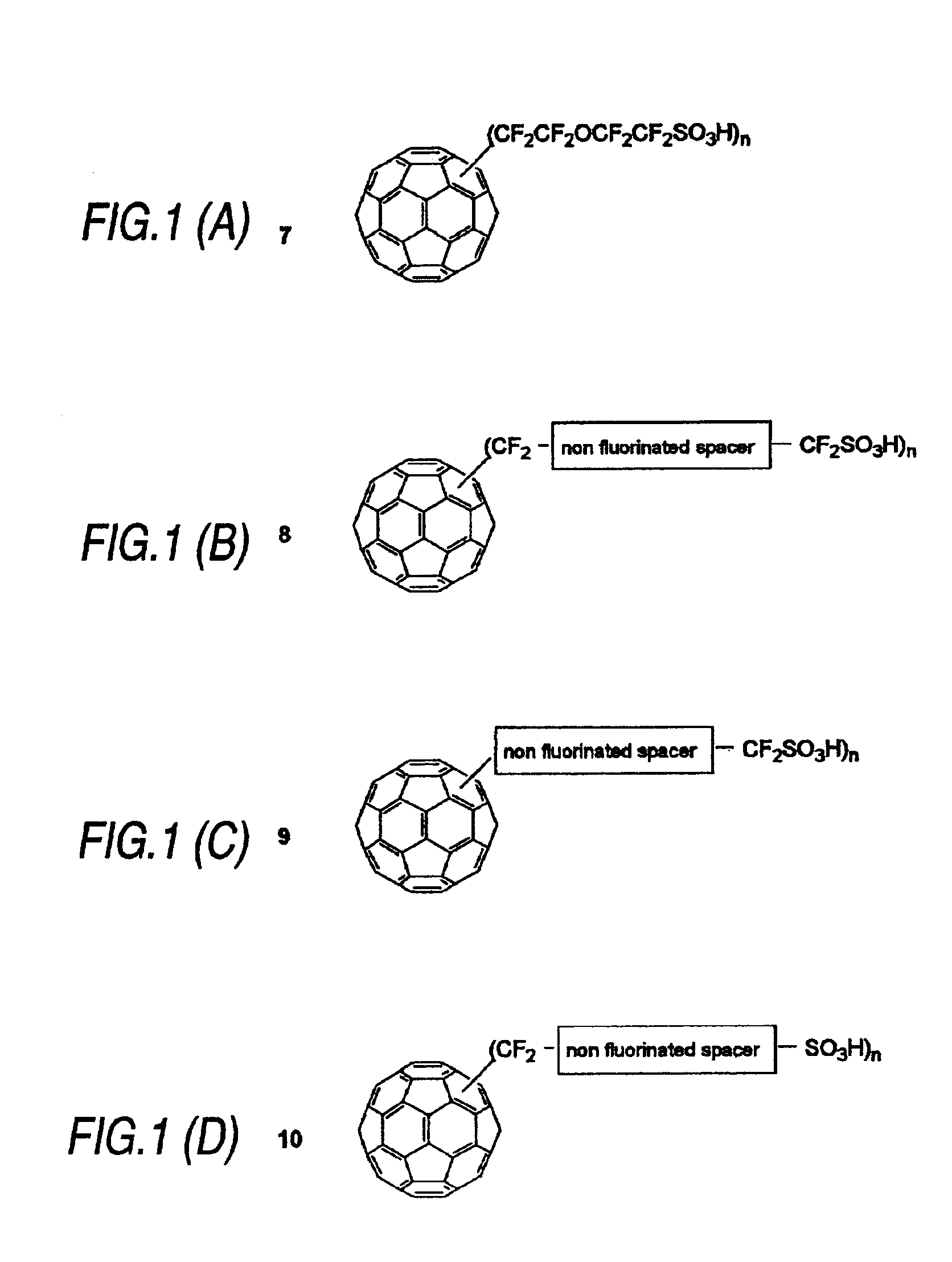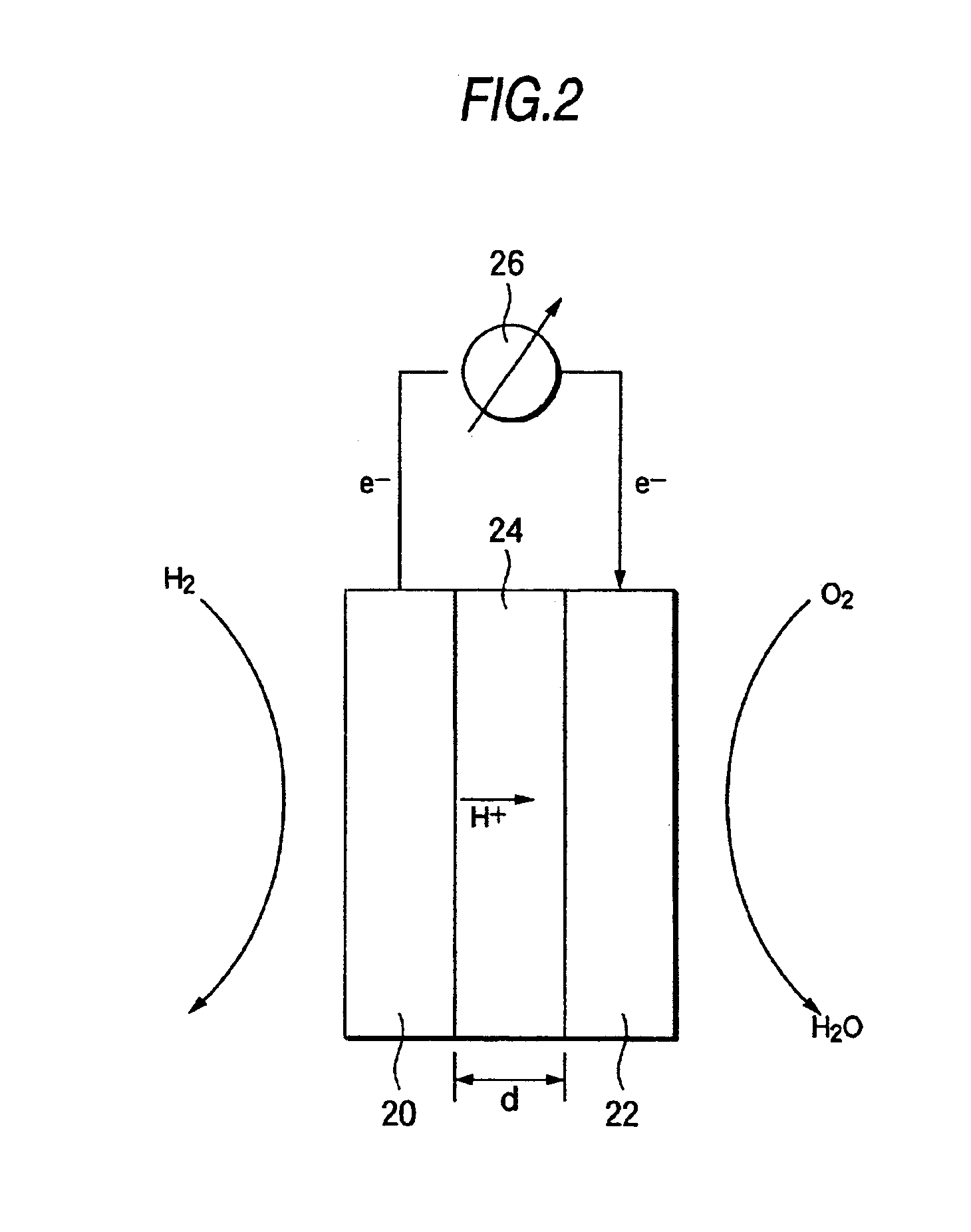Fullerene based proton conductive materials
a proton conductive material and fullerene technology, applied in the direction of fullerenes, conductors, non-aqueous electrolyte cells, etc., can solve the problems of lack of resistance to thermal and/or chemical decomposition, and suffer from fullerene-based materials, so as to increase the proton conductive performance, increase the thermal and chemical stability, and high the effect of proton conductivity
- Summary
- Abstract
- Description
- Claims
- Application Information
AI Technical Summary
Benefits of technology
Problems solved by technology
Method used
Image
Examples
Embodiment Construction
[0041]The present invention is embodied in a fullerene molecule having attached thereto at least one spacer molecule that, in turn, is attached to a proton conductive functional group. There may be more than one spacer molecule and more than one proton conductive functional group per fullerene. Further, although it is more usual to have each of the spacer molecules and each of the proton conductive functional groups be the same on each fullerene, such is not necessary. That is, each fullerene may include a plurality of different spacer molecules. Similarly, a plurality of different proton conductive functional groups may be attached to a fullerene by the same type, or a different type, of spacer molecule.
[0042]In general, a fullerene is a molecule made of carbon atoms and having a more or less spherical shape. As the fullerene molecule in the present invention, any of the known fullerene molecules can be used. For example, fullerenes are exemplified by C36, C60, C70, C76, C78, C82, ...
PUM
| Property | Measurement | Unit |
|---|---|---|
| temperature | aaaaa | aaaaa |
| temperature programmed desorption | aaaaa | aaaaa |
| temperature programmed desorption | aaaaa | aaaaa |
Abstract
Description
Claims
Application Information
 Login to View More
Login to View More - R&D
- Intellectual Property
- Life Sciences
- Materials
- Tech Scout
- Unparalleled Data Quality
- Higher Quality Content
- 60% Fewer Hallucinations
Browse by: Latest US Patents, China's latest patents, Technical Efficacy Thesaurus, Application Domain, Technology Topic, Popular Technical Reports.
© 2025 PatSnap. All rights reserved.Legal|Privacy policy|Modern Slavery Act Transparency Statement|Sitemap|About US| Contact US: help@patsnap.com



